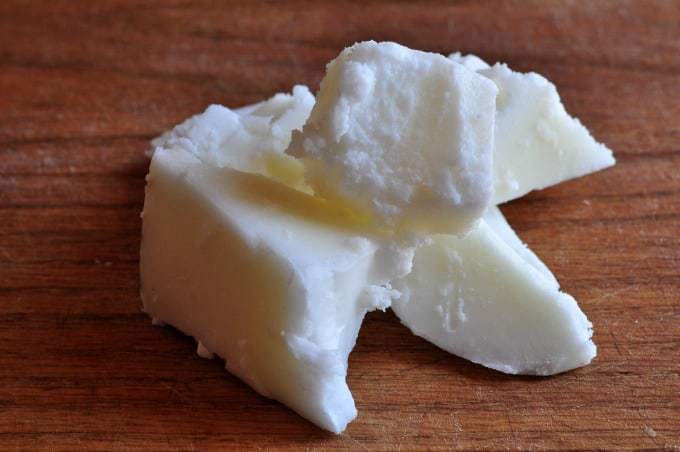
Lard and tallow from grass fed animals are full of fat soluble vitamins and actually good for you! How to Render Tallow is somewhat of a lost art but very easy.
Both have a high smoke point so they are very stable and great for frying. The reason many people today have learned how to render tallow or lard is to avoid the added hydrogenated fat.
That is right - the commercial lard available contains hydrogenated lard. A couple of good articles which give more information on the health benefits and history of oils used are "The Oiling of America" and "Good Fats, Bad Fats" both on the Weston A. Price Foundation (WAPF) website.
Learning about the fats which are good for you has revolutionized my cooking! Did you know that one hundred years ago, vegetable oil was not around?
People cooked with lard, tallow and butter. The difference between the three is the source.
Lard is rendered pig fat, tallow is rendered beef or sheep fat and butter is made from cream.
Does this mean you should buy tallow and lard from your local store? No, for one simple reason - quality!
Pastured animals have higher vitamin D levels and good quality monounsaturated fat.
This monounsaturated fat is the same fatty acid found in olive oil and avocados, both of which are prized for their cardiovascular health benefits.
Just as it is important to get good quality lard or tallow, when you learn Hhow to render tallow yourself, be sure to start with good quality fat - fat from pastured animals.
I am able to purchase frozen fat from grass fed cattle locally. For local sources find a chapter leader of the Weston A. Price Foundation in your area.
The local chapter leaders can send you a list of locally grown produce, raw milk and pastured meat and eggs.
If you are unable to locate a source in your area, you can purchase fat from grass fed animals (including bison!) from my affiliate partner U.S. Wellness Meats. They also carry the tallow ready to use which I have also used.
I can not stress enough how easy it is to render your own tallow. Normally, I render 10 lbs - 20 lbs of tallow at a time and use my 22 qt. Oster Roaster Oven, purchased from my affiliate partner.
Once the fat is in the roaster, I turn it on and leave it! Just remember, it does get very hot so, precautions should be taken to keep it away from little hands!
Below the recipe with photos is a printable version.
How to Render Tallow
Ingredients
grass fed animal fat
crock pot or roaster
Instructions
If your grass fed beef fat* is frozen, allow it to thaw.
The fat renders more quickly if the pieces - cut fat into pieces. I have found it easier to use scissors rather than a knife.
Place the cut up pieces of fat into roaster or crock pot.
Cook on medium low heat for 8 - 10 hours. Check to see if the fat has melted. If you overcook the tallow, it will have a darker appearance and stronger taste. I know from experience ;) I have read that one pound requires a couple of hours. You will know it is done when mostly liquid remains and chunks of hard stuff float to the surface. The photo below was taken after about 5 hours of cooking.
Strain the fat through a fine metal strainer into a mason jar - be very careful as it is extremely hot! I dip the liquid fat out with a 2 cup glass measuring cup, pour it through the strainer and into quart canning jars. The liquid will appear golden brown. As it cools, it turns a creamy white.
From 10 lbs of fat I get about 1 gallon (4 quarts) of tallow.
* Go here to find sources of grass-fed fat and other nutrient-dense foods in your local area.
** If you are not interested in rendering your own and would like to purchase from my affiliate, Click Here for a dependable source of grass-fed animal products including tallow.

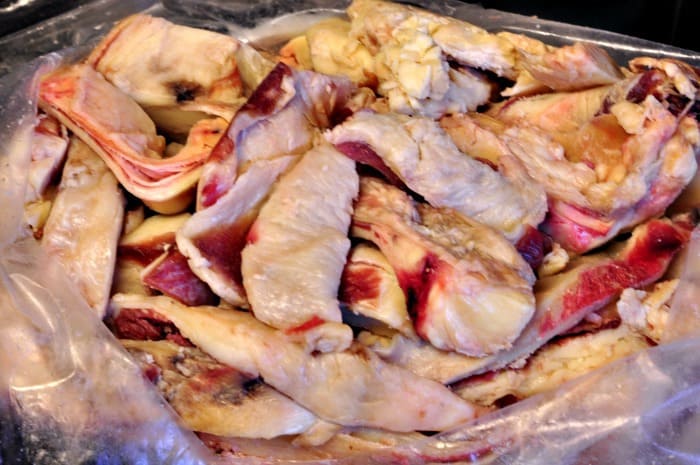
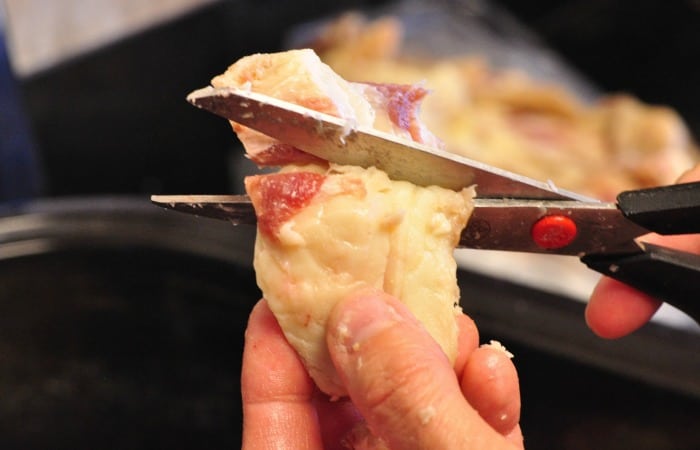
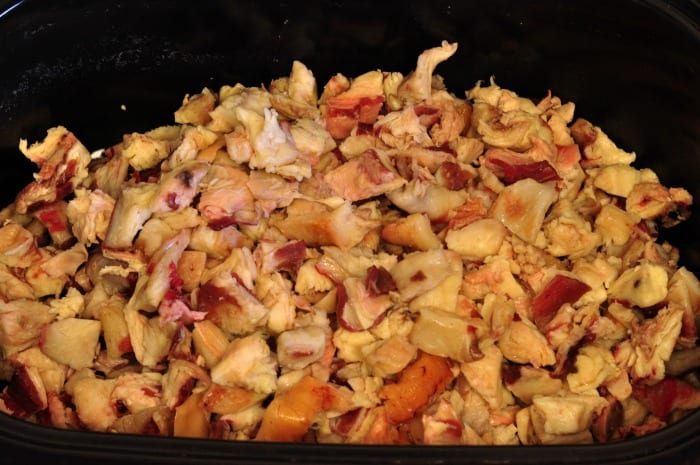
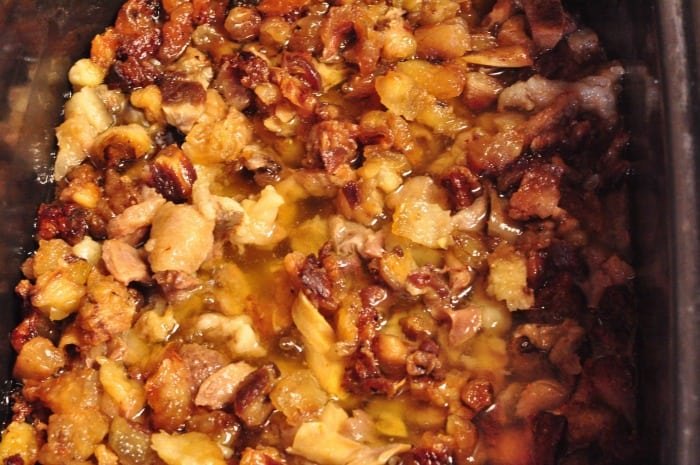
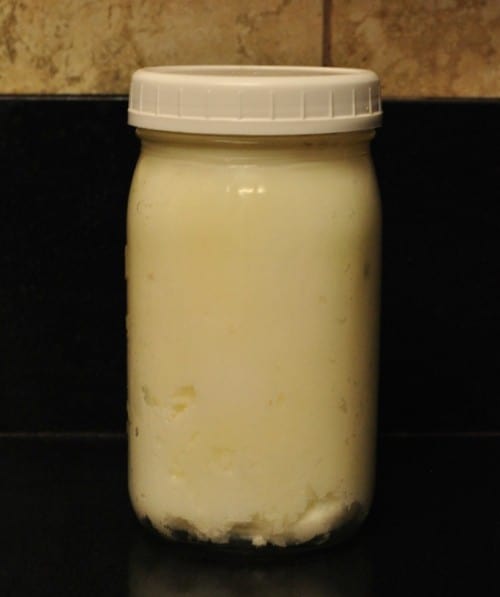
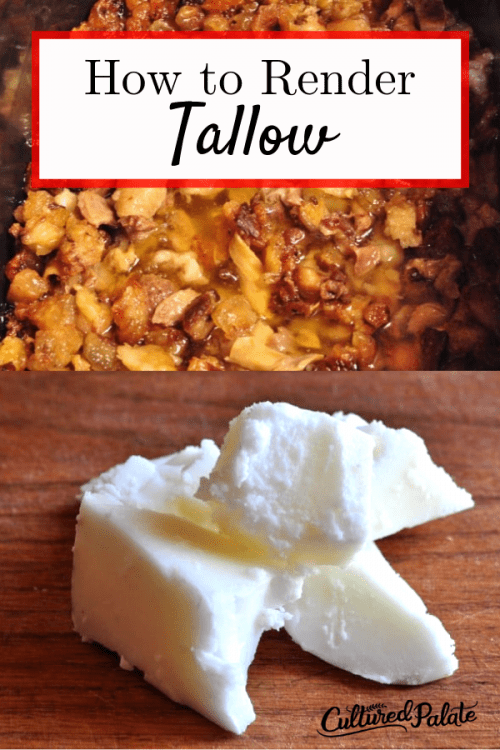
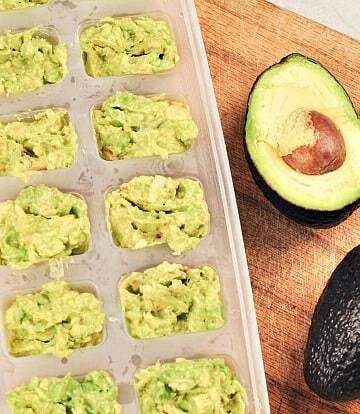
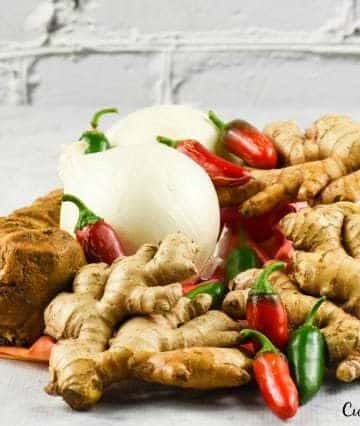
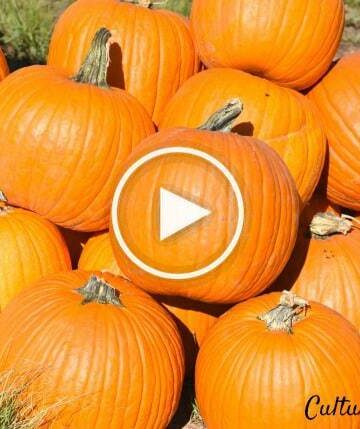
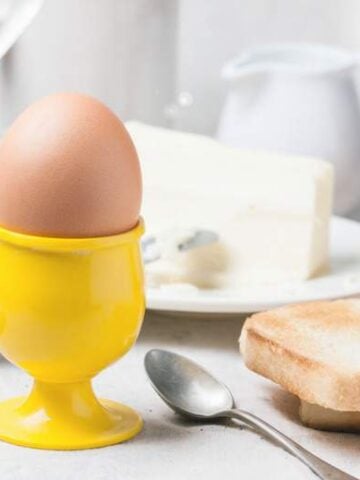
Madeleine says
HI-
Could you use pork fat for this? Thanks
Madeleine
Dina-Marie says
Yes, Madeleine, you could use pork fat.
Kalapi says
Hi Dina-Marie,
I've tried deep frying chicken wing in beef tallow, but they always end up soaking some of the fat and when they drop in temperature, the fine tallow coating forms over the wings. This happens despite me blotting any access fat off the wings. Any suggestions? Many thanks in advance! :)
Dina-Marie says
Kalapi, have you tried frying less at a time so the temperature doesn't drop? Sorry but that is my only suggestion.